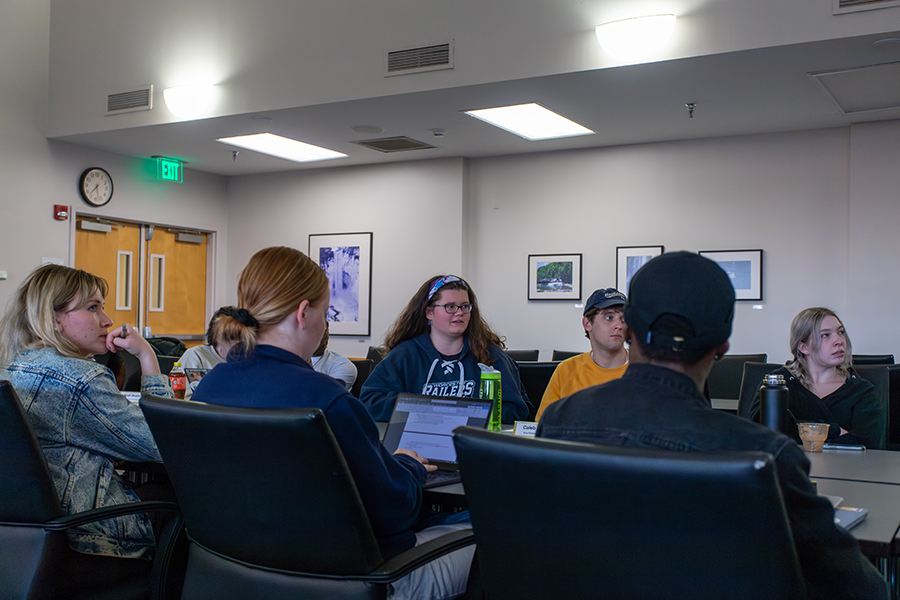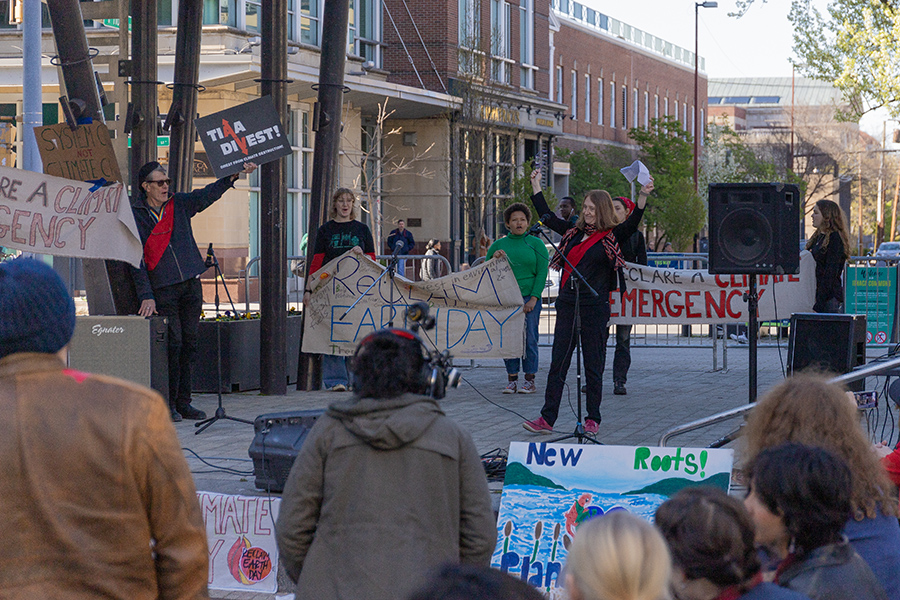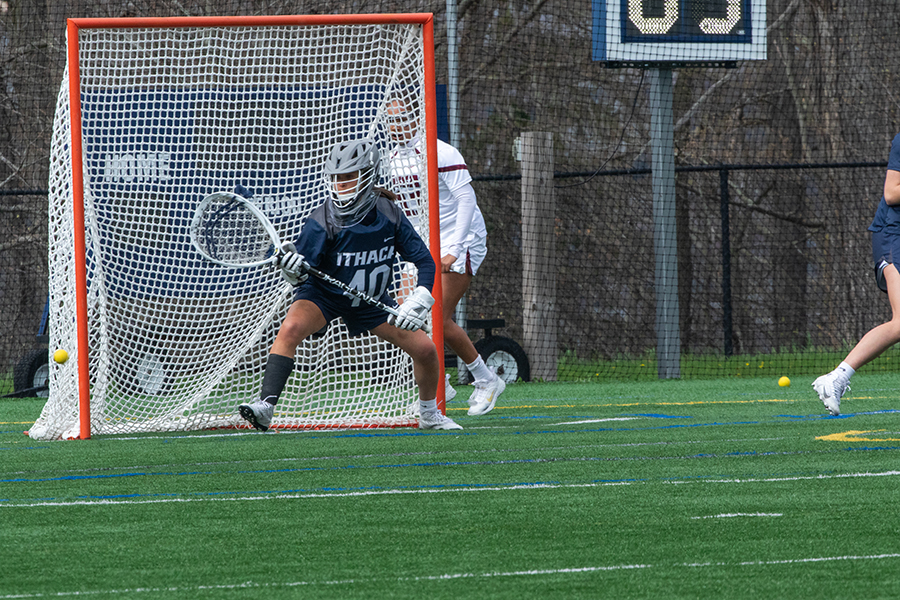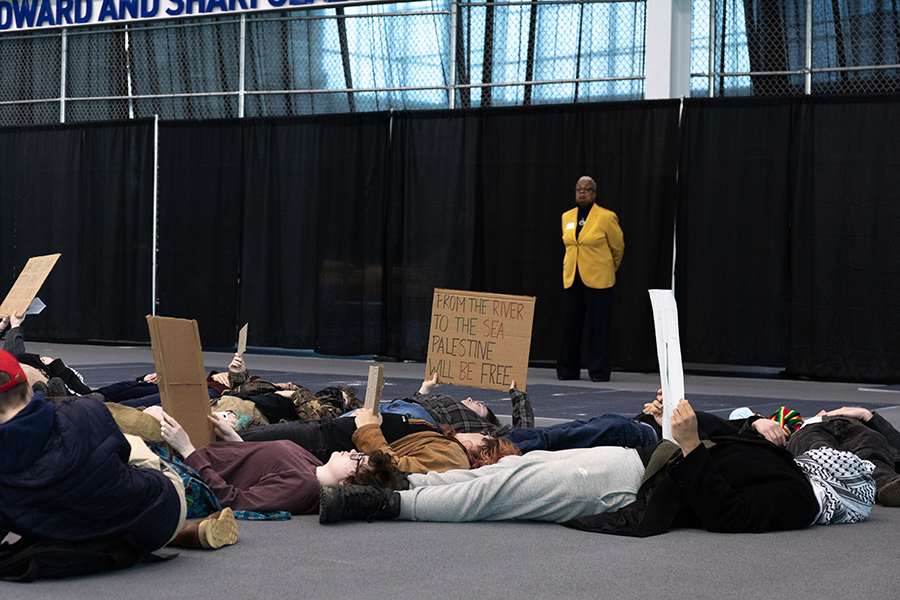To conclude its celebration of Native American Heritage Month, the Ithaca College anthropology department and the Office of Student Engagement and Multicultural Affairs hosted Alf Jacques to speak before a screening of the movie “Crooked Arrows” on Nov. 19 in Klingenstein Lounge.
Jacques, 64, is a member of the Onondaga Nation, and he has made wooden lacrosse sticks for more than 50 years. He was a cultural consultant on the set of “Crooked Arrows,” which tells the story of a coach who leads a Native American high school team on an uphill journey to the state lacrosse championship game.
Jacques was a former goalie for the professional indoor lacrosse squad the Syracuse Sting and has been a coach and general manager for multiple Onondaga Nation squads, which play with wooden sticks.
Steve Derderian, assistant sports editor, sat down with Jacques to discuss the movie, his lacrosse stick–making career and the Native American version of lacrosse.
Steve Derderian: How did you get involved with this screening process?
Alf Jacques: This all started when [“Crooked Arrows” co-producer Neal Powless] came to visit me. He saw what I was doing and thought it was unbelievable. They loved the history, the culture and tradition at Onondaga Nation and the sticks especially. I always go back to talking about this stick then and now. But today’s sticks are plastic with titanium handles. But they loved it.
SD: What specifically was your involvement with the movie?
AJ: All the handles that go into the plastic were made by me. When you see [the actors] running through the woods playing the game, a lot of those sticks were mine that they rented from me. I was also on the set as a cultural consultant. They actually changed the script to accommodate the Onondaga people and the traditional native people. When I came back from the shoot, people were asking me what it was like. I said, “You’re going to like stuff, and you’re going to hate stuff,” and that’s exactly what happened because it’s Hollywood. If we wanted our story our way, it would be a documentary and not a Hollywood movie.
SD: What are some of the differences in the Native American approach to the game compared to the modern game?
AJ: At Onondaga, we play our traditional game our way, our stick, our rules, our ball, without any input from Baltimore or any of the non-Native rulemaking people. It’s always a wooden stick. You don’t play with plastic, that’s just not done. You’re supposed to play this game as hard as you can, you run as fast as you can, you hit as hard as you can, but it’s not about hurting anybody; it’s about playing the game to the best of your abilities. On the field, there’s no center line, there’s no faceoff circle, restraining line, crease, endline, sideline or out of bounds in our game.
SD: Your father taught you to make wooden lacrosse sticks when you were a teenager, but do you have an apprentice or somebody you’re teaching to make these sticks?
AJ: I’ve looked for apprentices for a long time. I’ve gone the longest time without having a true apprentice who stuck with me long enough to get something done, and that’s a long time — 25, 30 years. I did train a couple people who made one or two sticks, but they didn’t stick with it. Bottom line, there’s a lot more work to this than people realize.
SD: When done right, how long does the process take to make one stick?
AJ: Eight months per stick. You don’t make one at a time, you make them in groups.
SD: Do you have any sticks on display in museums?
AJ: I have a stick in the Iroquois Indian Museum near Cobleskill. I have another stick in the governor’s collection in the New York State Museum in Albany, and I have a stick display from a split cut bent finished in Baltimore where they create all the rules in that museum there.
SD: So how much longer do you plan on making these sticks?
AJ: As long as I can. The apprentices are coming up. I’m going to make sure they can do it before I stop. I’m going to ease back, and I can’t physically do what I used to when I was younger. That’s just obvious. The numbers will dwindle down. I won’t be making a whole lot of them, I’ll just make less and less. Then the price will go up.







